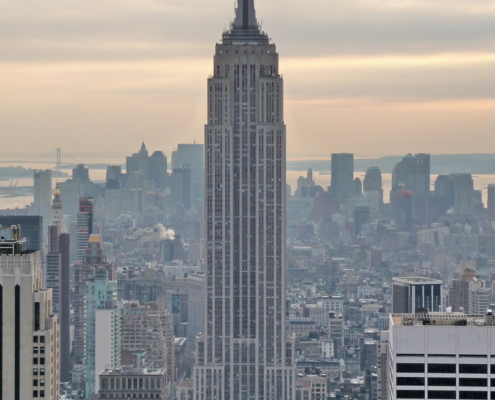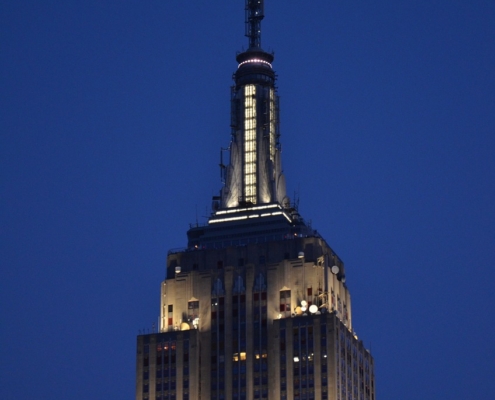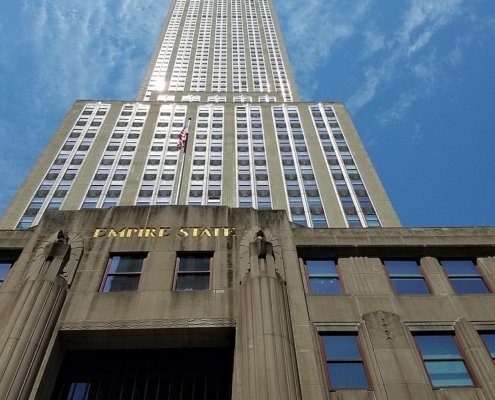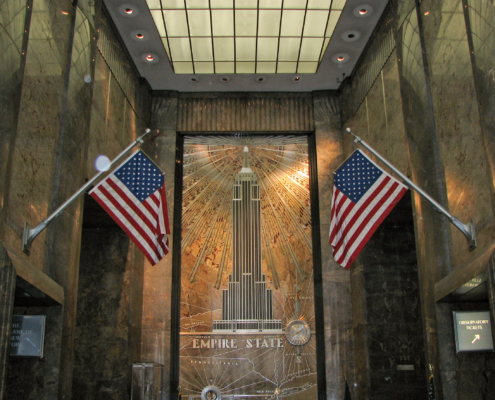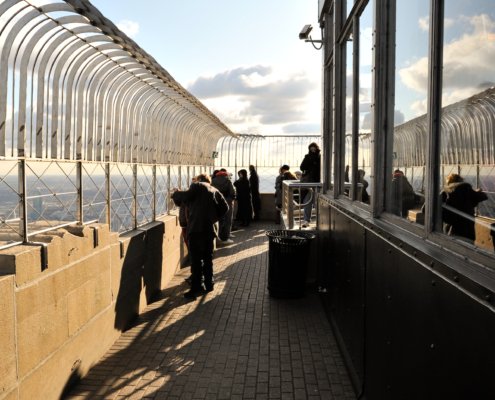"
Even in Manhattan—a sea of skyscrapers—the Empire State Building towers over its neighbors. Since its completion in 1931 it has been one of the most iconic architectural landmarks in the United States, standing as the tallest structure in the world until the Twin Towers of the World Trade Center were constructed in Downtown Manhattan four decades later. Its construction in the early years of the Great Depression, employing thousands of workers and requiring vast material resources, was driven by more than commercial interest: the Empire State Building was to be a monument to the audacity of the United States of America, “a land which reached for the sky with its feet on the ground.” Skyscrapers typically rose for one of two purposes: to serve as showcase headquarters for companies, or else as speculative projects by real estate developers. The Empire State Building was the latter, a scheme concocted by former New York City governor Alfred E. Smith in collaboration with his finance partner John Jakob Raskob. Less than a month before the Stock Market Crash of 1929, Smith and Raskob called together a meeting of the city’s wealthy financiers to discuss their solution to the impending financial disaster: an office tower of unprecedented height. According to Raskob, the massive undertaking would both inspire the American people and help stabilize an economy that was about to fall to pieces. Only twenty months passed from the start of concept design in September of 1929 and the building’s opening in May of 1931. At the peak of activity, the tower rose just over one story in a day – a rate of construction which, while still impressive by today’s standards, was unheard of in the 1930s. The material costs of the Empire State Building were every bit as high as those of labor. 210 foundation columns were sunk into the sturdy granite bedrock of Manhattan – a measure necessary to support the 365,000 tons of skyscraper above. 50,000 steel beams were then assembled and clad with glass, brick, and limestone to form a tower 1,250 feet tall. In spite of this, the building was not only completed on time, but a full 45 days ahead of schedule and $5 million under budget. The Empire State Building, despite its Art Deco styling, is significantly more austere in appearance than the more ostentatious Chrysler Building. Devoid of the sunburst windows and Moderne gargoyles that adorn the older tower, the Empire State Building is strikingly subdued. It is not entirely without ornament, however: a pair of sculpted concrete eagles flank the entrance, and shining aluminum extensions reminiscent of wings taper up toward the pinnacle of the tower. The exuberance of the Chrysler Building’s metal crown, when contrasted with the quiet dignity of the Empire State Building, can be seen as the changing attitudes of a country before and after the onset of the Great Depression – and it falls to the observer to decide which, if either, is the more appealing. Although the Empire State Building has long since lost its status as the world’s tallest building, it has never quite lost the adoration which it engendered in 1931. Just as Smith and Raskob envisioned, it has become an enduring monument to democratic—and more specifically American—perseverance and achievement. Even as skyscrapers continue to grow taller, eclipsing the record once set by the Empire State Building, its particular impact on New York and the idea of the skyscraper as a whole will likely remain. Joe Carbonelli, who worked as a water boy at the construction site during his youth, put it best: “Although there are now numerous buildings that are even taller, this one has remained a symbol for New York and America, and for courage and adventure.
"
Tags: Landmark, new york city
Information provided in part by: Arch Daily

